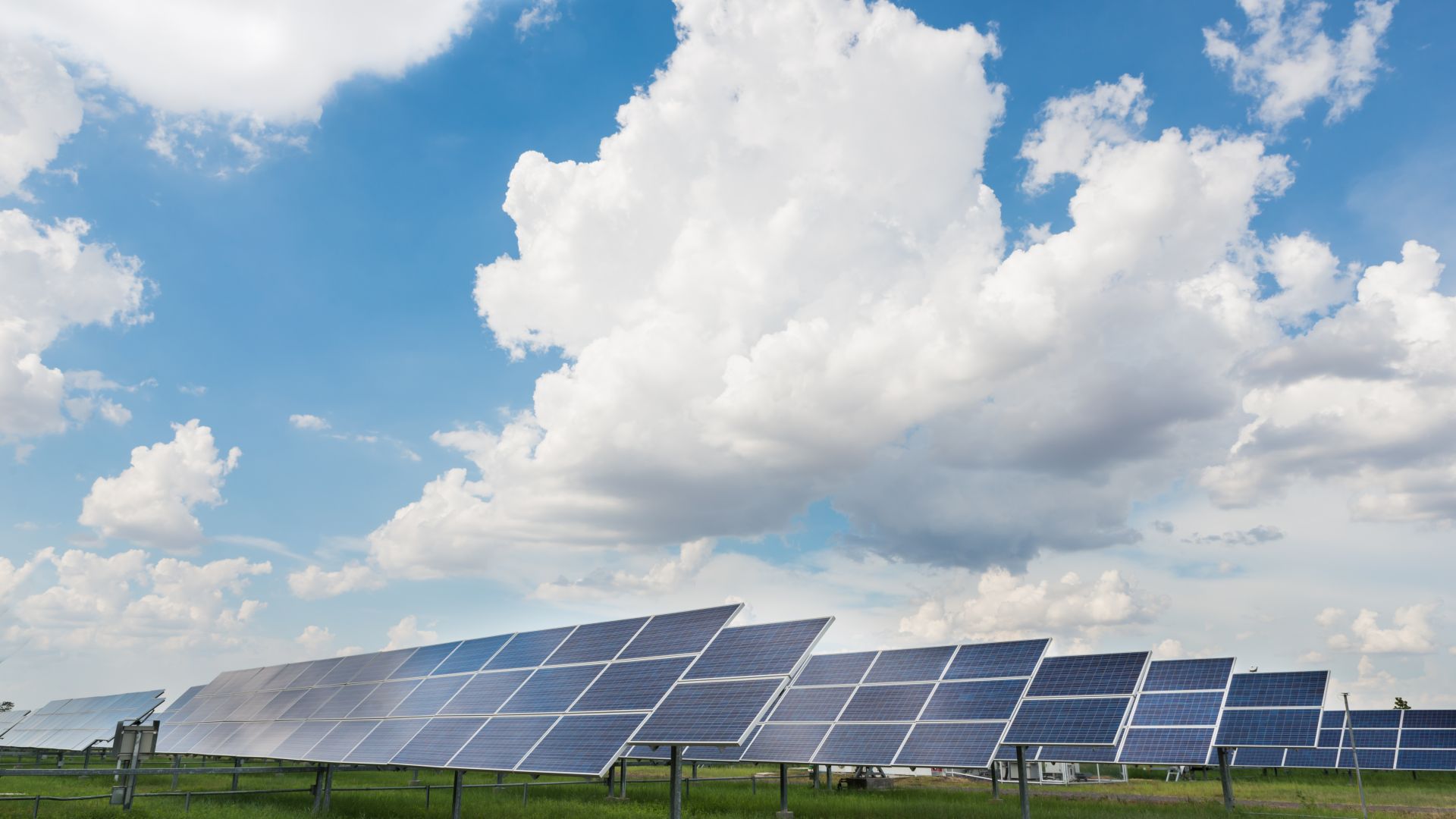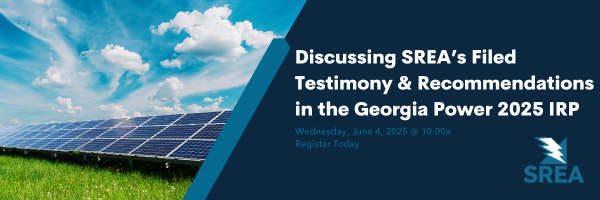Join the Southern Renewable Energy Association's Regulatory Director Whit Cox and Alejandro Palomino with Energy Strategies as they walk us through testimony filed by SREA in the Georgia Power 2025 Integrated Resource Planning (IRP) docket. The testimony included the following recommendations:
- Require GPC to expand their 2026 utility-scale renewables RFP to procure 2 GW of renewable energy resources by 2032
- Require GPC to issue an additional RFP in 2026 for 2 GW of storage resources by 2032
- Require GPC to demonstrate how its long-term capacity expansion modeling informs the timing, magnitude and composition of its resource planning and procurement efforts
- Direct GPC to support a Transmission Working Group to conduct multi- scenario, multi-benefit, long-term (minimum 20 years) transmission planning in an open stakeholder process
Click on the webinar graphic to register or click this link.
“Georgia’s growing economy demands more power—and soon,” SREA Executive Director Simon Mahan said. “Utility-scale renewable energy resources like solar and storage are ready to deliver reliable, affordable energy to help meet that need, while supporting continued economic development across the state.”
Testimony was submitted by Palomino, a Senior Consultant at Energy Strategies, an independent consulting firm. He was retained by SREA to evaluate Georgia Power's 2025 IRP modeling methods, best practices, and transmission plans. Palomino independently developed and conducted alternative capacity expansion modeling to thoroughly assess the accuracy of Georgia Power’s models and the prudence of its resource procurement plans outlined in the IRP.
Palomino’s testimony also highlights opportunities to improve Georgia Power’s planning processes. He advocates for adopting multi-scenario, multi-benefit long-term transmission planning that involves stakeholders and considers extreme weather risks. He notes that Winter Storm Elliott exposed vulnerabilities in the Southeastern region.
While Georgia Power avoided outages during Elliott, its gas fleet experienced significant forced outages, and solar resources performed well during the winter event. This underscores the importance of investing in additional storage and transmission expansion, which can firm solar capacity and provide access to low-cost, uncorrelated resources from other regions—both critical components for resilience.
Enhanced regional and interregional transmission investments are vital to supporting load growth, reducing costs, and increasing system resilience. A recent study by the Brattle Group affirms that Southeast utilities must invest in regional transmission to improve reliability and lower system costs.
However, the current planning process, particularly within the Southeastern Regional Transmission Planning (SERTP) process, is insufficient to meet future needs. Longer-term planning horizons—at least 20 years—are necessary to anticipate future demands, evaluate economic and reliability benefits, and align investments with the operational life of assets. Palomino notes that, “Since its founding in 2014, SERTP has never identified a regional transmission project that is more efficient or more cost-effective to address transmission needs than those proposed in local transmission plans. Over the same time, SERTP has not carried out any public policy studies.”



